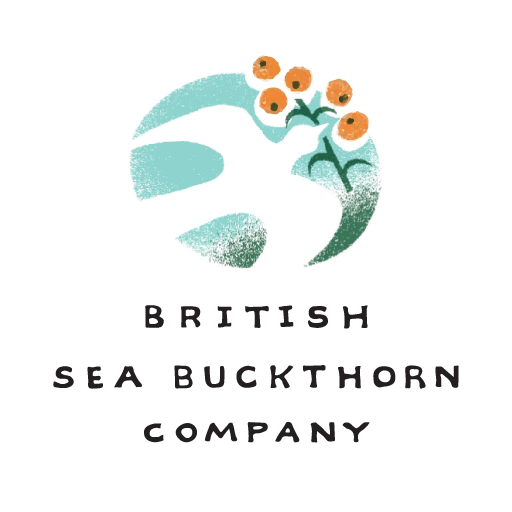This time last year I was looking across my seabuckthorn with dismay.
One of the issues with the crop is that the longer it takes to establish, the greater your passion grows for it to succeed. So when disease strikes – it becomes personal. In effect it hit about 400 plants within the main area of 3000.
A visit from an agronomist from Agrovista resulted in a stinging email that if I did not get on top of the weed issue then the project would fail.
So this year has been a concentrated focus to reverse the slide into failure and it is paying off.
Weed control is not total across the whole site. Each plant has a one metre strip cut alongside it on both sides. The labouriously the grass, and other unwanted water and nutrient stealers are mown with a 22″ hand mower.
Gradually more and more plants are being surrounded by a 30kg ring of compost, so the hand mowing problem becomes less and less.
Go and buy a machine I can hear you thinking.
That is fine but you also have to remember that as an unknown UK crop that still has not produced a commercial harvest, I have to chose where our limited funds are to be spent.
This year it is on the compost tea brewer; compost ( around 150 tons); and I now have help with the mowing/weeding. The budget then will spread to berry analysis; going to the Euroworks conference in Finland; purchasing more plants and installing a serviced office on the site.
The compost around the plants has made a huge difference. As I do not water my plants it is helping to stop the ground baking dry.
The compost tea programme is now covering all plants in a three week cycle. In terms of disease control the difference between this year and last is amazing. There are still some plants which have yellowed and these stick out as sick and lonely individuals.
Whether they survive we will have to wait and see.
One observation I should mention regards the berries on Klaudia. In 2011 when the german plants first started to have berries they appeared as lots of little sacks that did not fill and most shed off the plants. With klaudia 80% are small orange berries that similar to the germans in 2011, they just are not filling. There are a few full berries and these are yellow.
The variety with the most berries is Altaiskaya. These are in a pale green phase and have not changed colour over this month.
I tried to measure one with a refractometer to test the Total Soluable Solids. Unfortunately the instruement gauge only goes up to 10 and the reading went over that – which is good, but I am now waiting for a refractometer with a 0-20 gauge.
June has been dry as a month and it looks like it is going to continue. It is a test on the plants that have been planted this year, but the majority will survive. Providing no water means that their roots have to go deeper – the root to survival.
I have been writing this blog over the last week but today kicked in a new problem that I possibly could/should have foreseen but didn’t.
I am in the process of mowing the site and as I went up and down the rows I noticed that there seemed to be fewer berries than there were.
In short I am fairly certain that the flock of rooks that have been around the site over the past month having now a taste for seabuckthorn.
Mother Nature at work – but before they are ripe as well.
I will have a good look tomorrow but my plans for sending berries away for analysis now looks like being put off for a year. I will have the german berries to test, but it was the Siberian varieties that are the one’s of real interest.
I will put some fleece around the plants that still have some on, but this is shutting the stable door after the birds have flown away with a belly full of my berries.
One thing about seabuckthorn there never is a shortage of issues to solve.
On the bright side though the plants look healthy and they are still young and growing. But it would have been good to taste some UK Siberian seabuckthorn.
